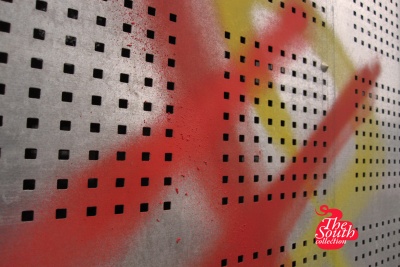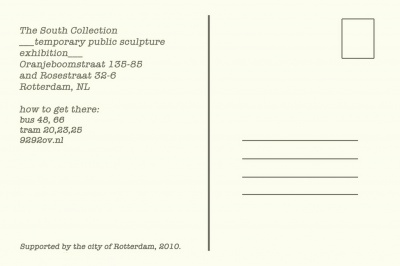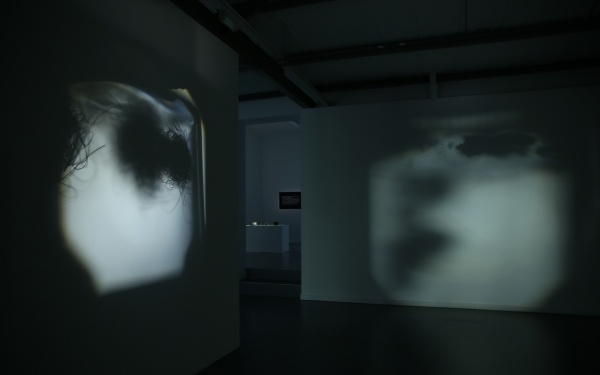User:Darija Medic/project3: Difference between revisions
Darija Medic (talk | contribs) |
Darija Medic (talk | contribs) |
||
| (4 intermediate revisions by the same user not shown) | |||
| Line 1: | Line 1: | ||
== | ==Description== | ||
| Line 20: | Line 22: | ||
Using the form of the museum, the project is battling a typical understanding of public space as being an open, participatory space for debate. Institutionalizing freedom (avant-garde, public actions, street art) lessens the sole possibility of actual freedom of speech, exactly because it becomes accepted and appropriated. Susan Buck-Morss talks about “authors in a position to speak to the masses that do not speak for the masses”. So if we surrender our idea of public art coming from the public, and accept broader interests concerning public space, who are the actual public artists? The South Collection leaves its authors anonymous, but the artifact itself draws possible conclusions. | Using the form of the museum, the project is battling a typical understanding of public space as being an open, participatory space for debate. Institutionalizing freedom (avant-garde, public actions, street art) lessens the sole possibility of actual freedom of speech, exactly because it becomes accepted and appropriated. Susan Buck-Morss talks about “authors in a position to speak to the masses that do not speak for the masses”. So if we surrender our idea of public art coming from the public, and accept broader interests concerning public space, who are the actual public artists? The South Collection leaves its authors anonymous, but the artifact itself draws possible conclusions. | ||
In a large scale canvas of the city, public artists become nothing more than appropriate tools fitting into planned city landscapes. | In a large scale canvas of the city, public artists become nothing more than appropriate tools fitting into planned city landscapes. | ||
==Documentation== | |||
[[File:Xxx.jpg|400px|postcard public sculpture exhibition]] | |||
[[File: | [[File:Backside1.jpg|400px|backside postcard public sculpture exhibition]] | ||
[[File: | [[File:Cups.jpg|200px|The South Collection souvenirs]] | ||
[[File: | |||
[[File: | [[File:Untitled-2.jpg|600px]] | ||
==Links to Project== | ==Links to Project== | ||
Latest revision as of 00:39, 7 March 2011
Description
The South Collection is an attempt to understand the process of institutionalizing an object of material culture into an artifact (or how is a work articulated to be considered as art). Specifically, how does a contemporary public sculpture become to exist, through creating a public artwork, by appropriating soon to be torn down buildings as public sculptures. The project consists of 1) a museum/gallery entrance setup, with the official South Collection website, catalog and souvenir stand, with postcards and cups, and 2) an audio guide, mostly meant to be used in situ, on location of the actual buildings, while walking the district and observing them.
The institutional facade of the project is using the identity of CBK (center for visual arts, the organization in charge of public art in Rotterdam) as, on one hand a fictious identity correction for the CBK, and, on the other, giving the project its official character. The project detournes the website of CBK and their logo, keeping a life-like identity, and as a reflection on who are the players picking cards in public space.
Are public sculptures ornaments of the city, a commodity, connected to a democratic understanding, giving public the freedom of visual speech, or are sculptures meant for the public to see? The catalogue of The South Collection says: “What does the term public in public art stand for? Does it stand for the people, is it art for all, art for the many, or is being situated in something that is called public space enough of a guarantee of a model different from a classical institutional, especially when the classical model brings out strategies of intervention and appropriation as its own. Situated in Rotterdam, the Netherlands, where the conversation between liberal conditions and strict regimes is well maintained, this large collection of sculptures deals with the everyday person, bringing up questions of home, boundary spaces, closure, immigration, human rights, temporality, questions of spaces and communication.”
Using the form of the museum, the project is battling a typical understanding of public space as being an open, participatory space for debate. Institutionalizing freedom (avant-garde, public actions, street art) lessens the sole possibility of actual freedom of speech, exactly because it becomes accepted and appropriated. Susan Buck-Morss talks about “authors in a position to speak to the masses that do not speak for the masses”. So if we surrender our idea of public art coming from the public, and accept broader interests concerning public space, who are the actual public artists? The South Collection leaves its authors anonymous, but the artifact itself draws possible conclusions. In a large scale canvas of the city, public artists become nothing more than appropriate tools fitting into planned city landscapes.
Documentation
Links to Project
Source Code
is an identity correction of the cbk website




